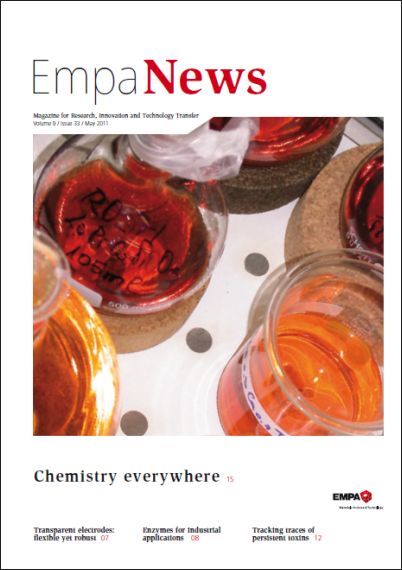EmpaNews No 33 published
Focus: International Year of Chemistry
Every material – just like every substance – is made up of chemical elements. It’s no wonder, then, that a large number of chemists are hard at work at Empa. They are looking into new materials which are expected to be more effective, less expensive and environmentally friendlier than those being used today. For this, they are synthesising countless as yet unknown materials and studying their properties.

| A further important area for chemistry is analytics. Researchers can, for example, follow how long-lasting pollutants, some of which have been banned for decades, can accumulate in various ecosystems. On the occasion of the “International Year of Chemistry”, EmpaNews takes a peek into laboratories. We hope you will enjoy reading our magazine! Further Information: PDF of the Focus | ||
| | ||
| Research and Development
| ||
| |||
| |||
| |||
| |||
| |||
| |||
| |||

